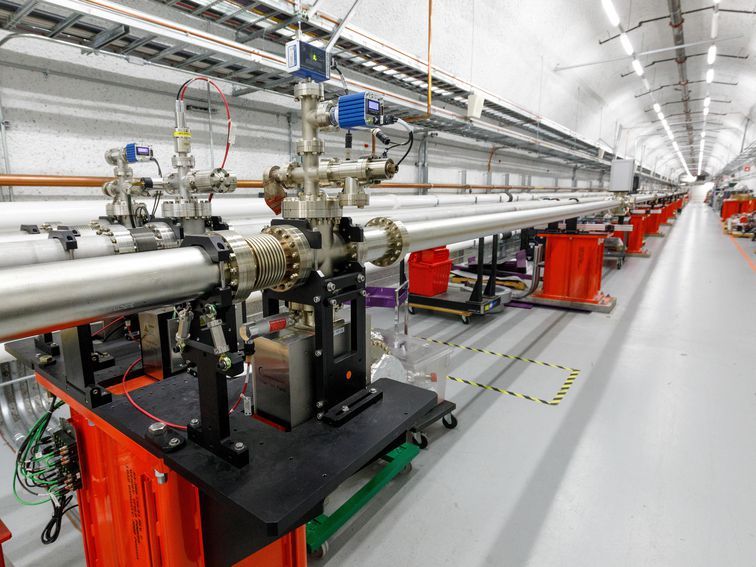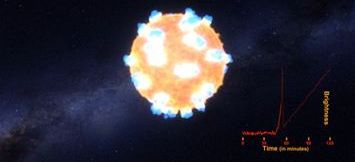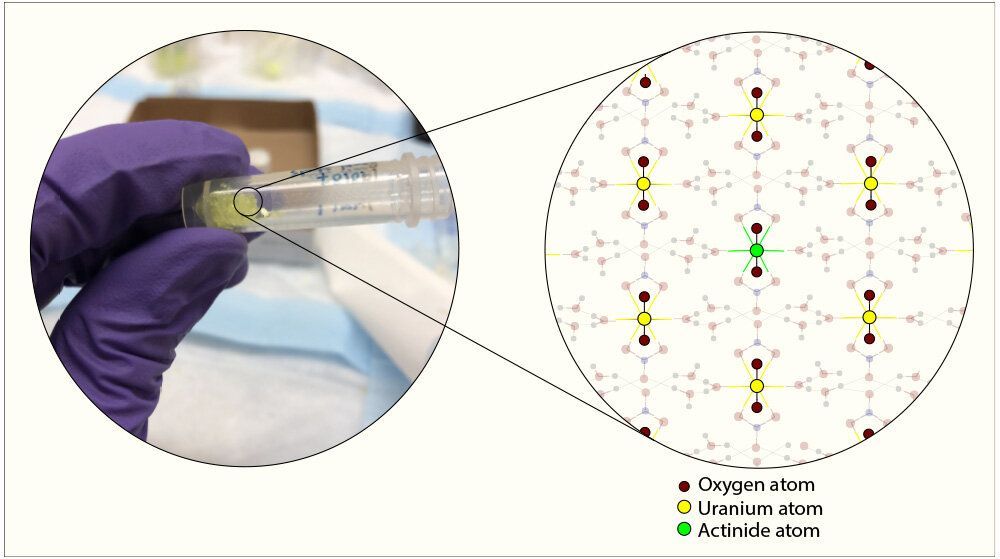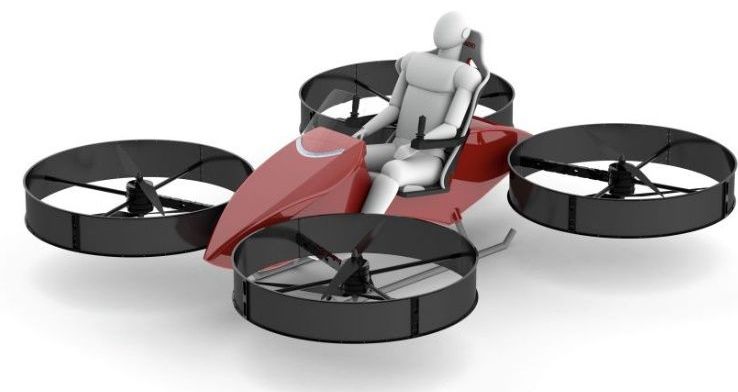Page 6789
May 5, 2020
Stanford scientists created a sound so loud it instantly boils water
Posted by Shailesh Prasad in category: futurism
May 5, 2020
Paradoxes of Probability & Statistical Strangeness
Posted by Genevieve Klien in categories: food, health
Statistics is a useful tool for understanding the patterns in the world around us. But our intuition often lets us down when it comes to interpreting those patterns. In this series we look at some of the common mistakes we make and how to avoid them when thinking about statistics, probability and risk.
You don’t have to wait long to see a headline proclaiming that some food or behavior is associated with either an increased or a decreased health risk, or often both. How can it be that seemingly rigorous scientific studies can produce opposite conclusions?
Nowadays, researchers can access a wealth of software packages that can readily analyze data and output the results of complex statistical tests. While these are powerful resources, they also open the door to people without a full statistical understanding to misunderstand some of the subtleties within a dataset and to draw wildly incorrect conclusions.
May 5, 2020
Visualising algae-eating viruses from space
Posted by Quinn Sena in categories: biological, climatology, sustainability
Algae isn’t just found in your garden pond or local river. Sometimes it explodes into vast “blooms” far out to sea, that can be the size of a small country. Such algal blooms can match even a rainforest at taking carbon out of the air. And then, in just a week or two, they are gone – sometimes consumed by viruses.
Given the scale of blooms and their vital role in both marine ecology and climate regulation we must know more about these viruses. Research conducted with our Weizmann Institute colleague Yoav Lehahn and others and published in the journal Current Biology, is the first attempt to quantify the affect of viruses on large scale algal blooms.
Algae in this context refers to tiny sea organisms known as phytoplankton which exist right at the bottom of the marine food web, providing the ultimate source of all organic matter in the sea. They do this by consuming carbon dioxide during photosynthesis, “fixing” this carbon into organic matter (themselves) in the same way trees take carbon out of the air.
May 5, 2020
Firm tests UV light treatment that Trump was mocked for mentioning
Posted by Omuterema Akhahenda in category: biotech/medical
Aytu BioScience announced on April 20, four days before the Trump remarks, that it has signed an exclusive licensing deal with Cedars Sanai Medical Center in Los Angeles. The center has developed and is testing a UV-A “Healight” designed to be inserted via a catheter inside the trachea to kill pathogens, including the coronavirus.
Ultraviolet, or UV, light is commonly used by physicians to treat skin iseases. Cedars-Sanai says UV-A phototherapy potentially could be employed in internal organs.
President Trump has been mocked relentlessly for suggesting that ultraviolet light could be brought “inside the body” to kill the coronavirus, but there is ongoing research to do just that.
Continue reading “Firm tests UV light treatment that Trump was mocked for mentioning” »
Click on photo to start video.
NASA captured the brilliant flash of an exploding star for the first time.
May 5, 2020
Coronavirus Florida: Bradenton ‘church’ ordered to stop selling bleach as COVID-19 miracle cure
Posted by Lon Anderson in categories: biotech/medical, neuroscience
Fyodor Rouge, this is the church I was telling you about.
The Bradenton-based organization falsely claims that the treatment is effective for a number of conditions, including Alzheimer’s disease, brain disease, cancer, HIV and AIDS, according to the Food and Drug Administration.
This content is being provided for free as a public service to our readers during the coronavirus outbreak. Sign up for our daily or breaking newsletters to stay informed. If local news is important to you, consider becoming a digital subscriber to the Sarasota Herald-Tribune.
May 4, 2020
Iran launches its first military satellite
Posted by Derick Lee in categories: biotech/medical, military
As the world grapples with the coronavirus pandemic and historically low oil prices, the missile launch may signal a new willingness to take risks by Iran.
It said the satellite — dubbed the Nour — was deployed from the Qassed two-stage launcher from the Markazi desert, a vast expanse in Iran’s central plateau.
The satellite “orbited the Earth at 425km [264 miles]”, said the website. “This action will be a great success and a new development in the field of space for Islamic Iran.”
Continue reading “Iran launches its first military satellite” »
May 4, 2020
Study reveals single-step strategy for recycling used nuclear fuel
Posted by Quinn Sena in categories: chemistry, engineering, nuclear energy, sustainability
A typical nuclear reactor uses only a small fraction of its fuel rod to produce power before the energy-generating reaction naturally terminates. What is left behind is an assortment of radioactive elements, including unused fuel, that are disposed of as nuclear waste in the United States. Although certain elements recycled from waste can be used for powering newer generations of nuclear reactors, extracting leftover fuel in a way that prevents possible misuse is an ongoing challenge.
Now, Texas A&M University engineering researchers have devised a simple, proliferation-resistant approach for separating out different components of nuclear waste. The one-step chemical reaction, described in the February issue of the journal Industrial & Engineering Chemistry Research, results in the formation of crystals containing all of the leftover nuclear fuel elements distributed uniformly.
The researchers also noted that the simplicity of their recycling approach makes the translation from lab bench to industry feasible.
May 4, 2020
Flyt Aerospace bids its Red Hummingbird hoverbike for US Air Force’s Agility Prime
Posted by Quinn Sena in category: military
Flyt Aerospace is offering its Red Hummingbird pilot-optional, fully-electric hoverbike for the US Air Force’s (USAF’s) Agility Prime electric vertical takeoff and landing (eVTOL) procurement effort.
The eight-motor, multi-rotor Red Hummingbird is designed for speeds of 0–97 km/h in 5.1 seconds, payload capacity of up to 113 kg, a cost of USD2.40 worth of electricity per flight, and the ability to operate for 20–30 minutes per charge. The aircraft is also designed to create only 65 db of noise at 50 ft altitude. Flyt is offering the Red Hummingbird for the Agility Prime 1–2 person capacity area of interest (AOI) 2, according to company founder and CEO Ansel Misfeldt.
Misfeldt told Jane’s on 1 May that the Red Hummingbird has a fully-built prototype currently in flight testing, but that the aircraft has yet to fly with a human. Flyt has so far been flying the aircraft with weights in the pilot seat to ensure system checkout before flying with a pilot.


















